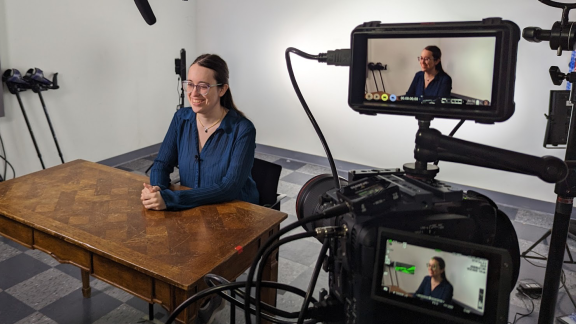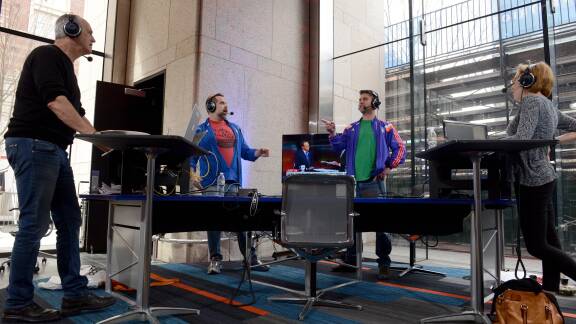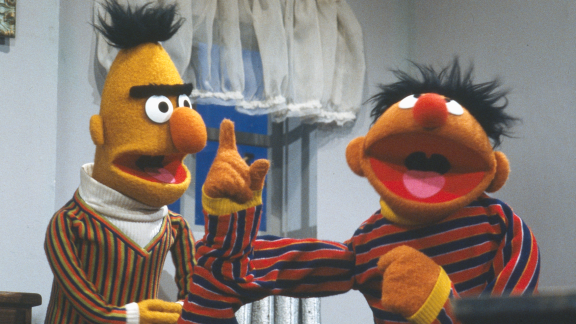NCAM is dedicated to making media and all forms of electronic communication fully accessible to people with disabilities. By advancing digital accessibility, we help organizations broaden their reach and deepen their impact. Through strategic collaboration with industry leaders, NCAM promotes inclusive content, interactivity, and functionality across the digital landscape.

Our Mission

Our Impact
NCAM drives innovation in technology and public policy by conducting research, developing demonstration models and standards, and engaging in advocacy and outreach. These efforts have significantly advanced accessibility across a wide range of digital platforms—including web technologies, streaming media, interactive tools, e-book systems, learning platforms, digital libraries, and mobile content.
Recognizing that accessibility looks different across industries, audiences, and products, NCAM customizes its services to align with evolving needs, trends, and expectations. By making digital products and services accessible, organizations can expand their reach and create more inclusive experiences for all users.
Through strategic partnerships, NCAM has collaborated with forward-thinking industries committed to embedding accessibility into every stage of the digital experience—from content creation to user interaction and functionality.
Our work has made a lasting impact across dozens of sectors, including:
- Academic publishing
- Higher education institutions
- Electronics and technology companies
- Online retail
- Media production and broadcasting
- Government agencies (local, state, and federal)
- Software, hardware, and app development
- Cultural institutions, amusement parks, and stadiums
- Credentialing and certification organizations
- Legal services
- Airlines

Our History
The National Center for Accessible Media (NCAM) was originally founded in 1991 under its name: the Media Access Research and Development Office (MARDO), which was a pioneering facility dedicated to examining the needs and desires of audiences traditionally denied access to media in all forms. In 1993, with funding from the Corporation for Public Broadcasting (CPB), MARDO was renamed the National Center for Accessible Media, which was quickly condensed to the now-familiar acronym, NCAM (pronounced "N-CAM"). In 2006, NCAM received a major five-year gift from the Carl and Ruth Shapiro Family Foundation to complement NCAM's federal, corporate and foundation support. In recognition, NCAM was renamed the Carl and Ruth Shapiro Family National Center for Accessible Media at WGBH.
NCAM is an extension of WGBH's ground-breaking work in media accessibility that began in 1972 with the establishment of The Caption Center and the development of captioning for television viewers who are deaf and hard-of-hearing. In 1990, WGBH's access mission was expanded by the development of video description for television audiences who are blind and visually impaired, and the establishment of Descriptive Video Services (DVS). NCAM's work in Web accessibility stretches back to 1996, when it launched the Web Access Project, one of the first studies focusing on accessible online materials.
Major Milestones in Media Accessibility
We invite you to take a look back at the evolution of creating media that can be used, read and viewed by people with disabilities.
Achievements & Standards
- 1996: US Patent #5,570,944, "Reflected display system for text of audiovisual performances"
- 2012: FCC Chairman's Award for Advancements in Accessibility: Media Access Mobile (MAM)
- 2015: US patent #8,892,447, "Quality assessment of text derived from an audio signal"
- 2016: Technical Emmy for co-authoring the W3C's Timed Text Markup Language (TTML).
- 2018: FCC Chairman’s Award for Advancements in Accessibility: Caption and Description Editing Tool (CADET)
- 2018: Barry Levine Memorial Career Achievement Award (ACB/ADP)
- 1991-1998: Developed and released CC School, QuickCaption for Word and QuickCaption School, captioning software for use in classrooms.
- 1992: Launched MoPix, a project to research and develop ways of making movies in theaters accessible to deaf, hard of hearing, blind, and visually impaired people through closed captions and descriptive narration.
- 2000: Released MAGpie, the world's first free software for adding captions and audio descriptions to online multimedia.
- 2007: Developed CCforFlash, a free Flash component to display captions in Flash video and audio content.
- 2015: Created CC WebStreamer (aka TextStreamer) for repurposing broadcast caption data for online distribution, supporting both real-time and pre-produced captions.
- 2016: Developed CADET, a free browser-based tool for adding captions and audio descriptions to online video and audio.
- 2000: Created first-ever guidelines for accessible science and math educational software.
- 2000: Founded IMS Global Learning Consortium's Accessibility Working Group which led to the creation of the Access for All distributed learning standards.
- 2008: Published Effective Practices for Describing Images, for creating meaningful image descriptions textbooks and online materials.
- 2010: Co-established the DIAGRAM Center, along with Benetech and the U.S. Fund for DAISY, to research, develop and create tools, standards, guidelines and training to make it easier, cheaper, and faster to deploy accessible digital images.
- 2012: Published Describing Images for Enhanced Assessments
- 2012: Collaborated with IBM Research-Tokyo to research and develop methods of delivering text-based audio descriptions for online video.
- 2012: Prototyped solutions for delivering accessible supplemental materials alongside online video.
- 2015: Created a prototype accessible Personal Health Record system to demonstrate accessible health information technology
- 1997: Founding member, Web Accessibility Initiative (WAI) at the W3C.
- 1998: Served on the Federal Access Board's Electronic and Information Technology Access Advisory Committee; co-author of recommendations for the original Section 508 requirements.
- 1999 and 2008: Contributor, Web Content Accessibility Guidelines 1.0 (WCAG 1.0) and WCAG 2.0.
- 2004: Contributor, National Instructional Materials Accessibility Standard.
- 2010: Co-author, Timed Text Markup Language 1.0 (TTML 1.0).
- 2007-2008: Co-author, Telecommunications and Electronic and Information Technology Advisory Committee (TEITAC) Audio/Video subcommittee of the Federal Access Board, recommendations for the new Section 508 accessibility requirements.
- 2009-2013: Contributor, Advanced Television Systems Committee (ATSC) Digital Television Standard A/53 standard, including the delivery of captions and audio-descriptions.
- 2009-2013: Contributor, ATSC A/153 standard, defining requirements for transmission of captions to mobile and handheld devices.
- 2010: Contributor, SMPTE-ST 2052-1:2010 Timed-Text Format for converting broadcast captions for delivery over IP systems.
- 2015: Co-author, Media Accessibility User Requirements (MAUR).
- 2016: Appointed to the Federal Advisory Committee on Accessible Air Transportation (ACCESS Advisory Committee); co-chair, In-Flight Entertainment and Communications Working Group.
- 2017: Contributor, EPUB Accessibility 1.0: Conformance and Discovery Requirements for EPUB Publications
Contact NCAM
NCAM at GBH
One Guest Street
Boston, MA 02135
